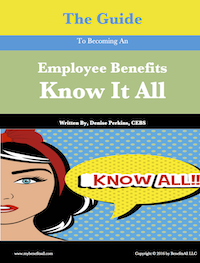Are High Dollar Medical Claims Out of Your Control?
September 16, 2014

If you stay in the employee benefit administration field long enough you are likely to encounter the half- to one-million dollar claim. The claim may be for a baby born prematurely, a cancer patient or hemophiliac. These claims may be for your employees or their dependents. The claimant may be a short- or long-term employee. And the claim may hugely impact your health plan cost going forward. Unfortunately, it may also impact how management views your performance.
It seems farfetched that top management would blame you for high dollar claims incurred by others. But it can happen… Despite privacy laws, management may feel that knowing your population’s health status is a central part of your job. And so is providing them with a heads up on potential high dollars claims, and having a strategy to address them. But is it your fault when the firm is hit by high dollar claims?
Are Unexpected High Dollar Medical Claims Your Fault?
Maybe. Consider this cautionary, true story.
Begin Story. A firm hired a full-time receptionist to work in one of their sales offices. She enrolled in the firm’s health plan as soon as she was eligible, the first of the month following 30 days of employment. After approximately 90 days of employment she received a formal performance evaluation. Her performance was not good. She was often late to work and took longer lunch breaks than allowed. In addition, her work product was not good. She made a lot of mistakes. Her manager terminated her employment after just six months and she immediately applied for COBRA family coverage.
Her COBRA coverage terminated after four months due to non-payment. In just over half a year on the firm’s health plan her family incurred over $300,000 in claims. She had a teenage son with hemophilia taking a high price specialty drug. End Story.
There are a lot of HR red flags here, including why the manager hired this person and why she stayed employed as long as she did. But that’s a story for another blog. I’m all about the bennies…
Where Did The Benefits Staff Go Wrong?
- The benefits staff had access to monthly claims data including pharmacy claims.
- The employee voluntarily informed the benefits manager her son was a hemophiliac taking a specialty drug.
- This information definitely pointed to a potential high dollar claim on the horizon.
As a self-funded group the staff assumed that all individual claims were subject to their individual stop loss limit, which was $75,000 at the time. It was not. Prescription drug claims are typically subject to aggregate stop loss limits, but not individual limits. Their aggregate limit for medical and prescription drugs combined was $1 million.
The benefits staff did not cause the high dollar claim; that was due to a horrible condition afflicting a young man. But their mismanagement of the claim was entirely their fault.
Conclusion
Every employer who offers health insurance experiences a high dollar medical claim. No one knows when it will happen or what type of claim will reach the high dollar mark. Top benefit managers know to expect and prepare for these types of claims. They rely primarily on their health plan design to minimize the financial risk of the claims, but also know the limits of their plan. This allows them to use other risk management techniques to address the risk insurance does not cover. Benefit managers not at the top of the game do the opposite or nothing all.
blog comments powered by Disqus


 Denise Perkins
Denise Perkins




